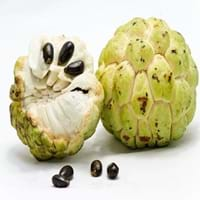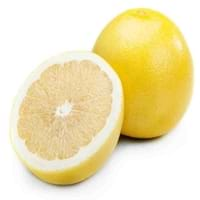Health Benefits
Cancer prevention, Heart care, Regulation of heart rate
Arthritis prevention, Asthma treatment, Cancer prevention, Kidney stone treatment, Liver health
General Benefits
Anti oxidant properties, Anti-inflammatory properties, Boosts immune system, Controls blood pressure, Digestive aid, Strengthens bones
Anti oxidant properties, Boosts immune system, Cures cough, Eye care, Fights against infections, Helps in weight loss, Improves eye vision, Maintains healthy cholesterol level, Treatment of common cold
Skin Benefits
Reduces wrinkles, Skin rejuvenation
Anti-aging benefits, Brightens and lightens complexion, Reduces wrinkles, Treatment of dark spots
Hair Benefits
Promotes longer and healthier hair, Treatment of dandruff, Treatment of Lice
Prevents hair loss, Protects hair, Regulates hair growth, Treatment of dandruff
Allergy Symptoms
Anaphylaxis, Itching, Skin rash, Swelling of face
Abdominal pains, Breathing difficulty, Decrease in blood pressure, Diarrhea, Dizziness, Eczema, Hives, Lightheadedness, Nausea, Runny nose, Sneezing, Swelling of mouth, tongue or lips, Vomiting, Wheezing
Side Effects
Allergic reaction, Possibly unsafe during pregnancy
Allergic reaction
Best Time to Eat
As a snack in the late afternoon, Don't consume at night and before bed, Morning time (before lunch)
As a snack in the late afternoon, Eat the fresh ones, avoid mixing with any other foods, don't eat after meal., Morning time (before lunch), Strictly avoid empty stomach
Vitamin A (Retinol)
Not Available
Vitamin B5 (Pantothenic Acid)
Vitamin C (Ascorbic Acid)
Vitamin K (Phyllochinone)
Not Available
Calories in Fresh Fruit with Peel
Not Available
Not Available
Calories in Fresh Fruit without Peel
Calories in Frozen Form
Not Available
Not Available
Calories in Dried Form
Not Available
Calories in Canned Form
Not Available
Calories in Juice
Not Available
Calories in Jam
Not Available
Calories in Pie
Not Available
Type
Tropical
Citrus, Tree fruit
Season
Autumn, Spring, Winter
All seasons
Varieties
Andrews, Amarilla, Asca, Baste, Bays, Bayott, Behl, Canaria, Capucha, Deliciosa, Ecuador, El Bumpo, Guayacuyán, Jete, Juniana, Knight, Nata, Popocay, Sander, Smoothey, Tumba, Umbonada, Whaley and White Juliana
Duncan, Marsh and Oro Blanco
Color
Green, Yellow
White
Inside Color
White
Creamy Yellow
Soil Type
Sandy loam
Loam, Well-drained
Climatic Conditions
Warm
Humid, Warm
Facts about
- Cherimoya is also called as custard apple or chirimoya.
- The word cherimoya came from the Quechua word,'chirimuya',which means 'cold seeds'.
- The cherimoya is called as 'the tree of ice cream'.
- February is known as National Grapefruit Month.
- It is called as state fruit of texas.
- No mechanical devices are used while picking grapefruits, they are always handpicked.
Other Countries
Argentina, Chile, Colombia, Egypt, Italy, Mexico, Peru, South Africa, United States of America
Argentina, India, Israel, Mexico, South Africa, Sudan, Thailand, Turkey, United States of America
Top Importer
United States of America
Europe
Top Exporter
Spain
United States of America
Botanical Name
Annona cherimola
Citrus paradisi
Synonym
Not Available
Not Available
Subkingdom
Tracheobionta
Tracheobionta
Division
Magnoliophyta
Magnoliophyta
Class
Magnoliopsida
Magnoliopsida
Subclass
Magnollidae
Rosidae
Order
Magnoliales
Sapindales
Family
Annonaceae
Rutaceae
Species
A. cherimola
C. × paradisi
Generic Group
Not Available
Citrus fruit
Difference Between Cherimoya and White Grapefruit
We might think that Cherimoya and White Grapefruit are similar with respect to nutritional value and health benefits. But the nutrient content of both fruits is different. Cherimoya and White Grapefruit Facts such as their taste, shape, color, and size are also distinct. The difference between Cherimoya and White Grapefruit is explained here.
The amount of calories in 100 gm of fresh Cherimoya and White Grapefruit with peel is Not Available and Not Available and the amount of calories without peel is 75.00 kcal and 33.00 kcal respectively. Thus, Cherimoya and White Grapefruit belong to and category.These fruits might or might not differ with respect to their scientific classification. The order of Cherimoya and White Grapefruit is Magnoliales and Sapindales respectively. Cherimoya belongs to Annonaceae family and White Grapefruit belongs to Rutaceae family. Cherimoya belongs to Annona genus of A. cherimola species and White Grapefruit belongs to Citrus genus of C. × paradisi species. Beings plants, both fruits belong to Plantae Kingdom.









